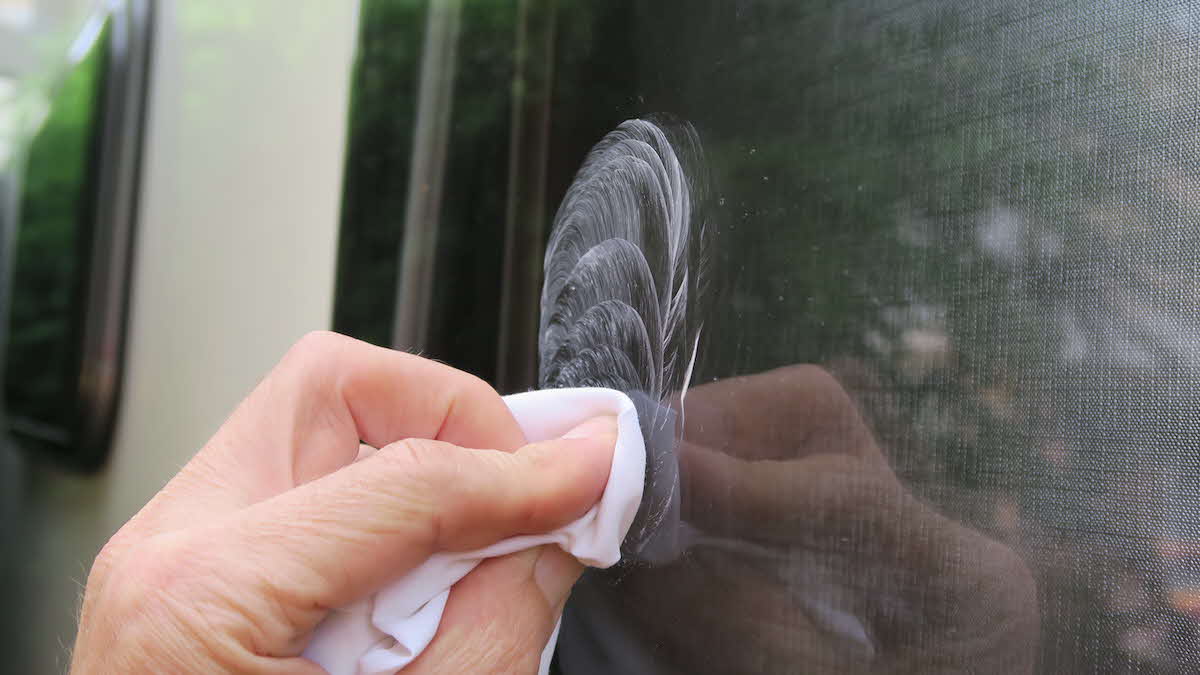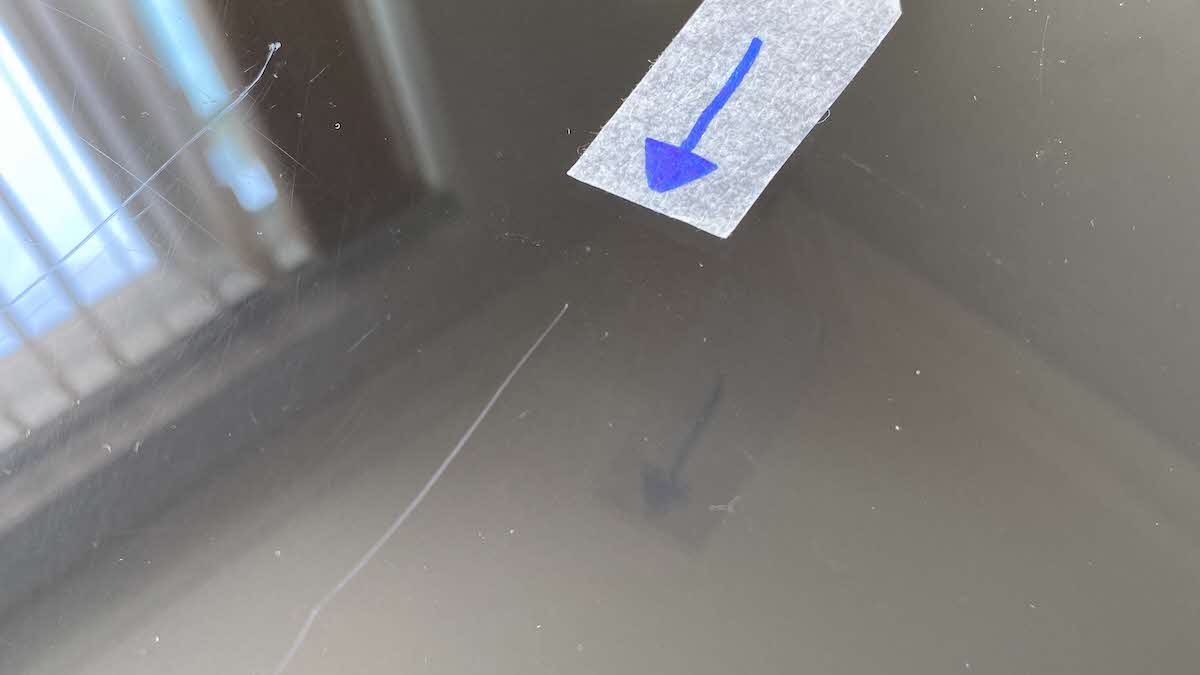Crystal clear
Scratched acrylic windows can be fixed with a little patience and effort. Sammy Faircloth reveals her step-by-step repair guide

British hedgerows can soon turn nasty if we drive too close, the acrylic windows in our caravans and motorhomes prone to damage from sharp spikes and thorns. We’ve all suffered – particularly those that enjoy off-the-beaten-track sites down narrow country lanes – and we’re reminded of particularly tight scrapes whenever we look out of damaged windows.
The good news is that, in most cases, you don’t need to replace scuffed windows: it is possible to treat the scratches. Here I explain how to deal with abrasions of varying severity.
Products and kit

First buy a polish or paste that is specifically designed for acrylic windows. Regular household products could cause permanent damage and must not be used. You should also invest in some decent cleaning cloths. Microfibre cloths used for polishing reading glasses are ideal, though others may also be suitable. It is also possible to buy a polishing head that fits onto an electric drill – but the drill must have a low speed setting (the last thing you want to do is create too much heat – see below).
Procedure
To understand more about acrylic window scratches, I sought advice from Jonathan Smith of Fenwicks, a manufacturer of scratch removal products. He guided me through the complexities of the restoration process.
If the scratches are only very minor, window polishes and pastes should be sufficient. However, deep scratches require initial treatment with abrasive papers that can be finished off with a product like Fenwicks Windowize.
Jonathan advises using dry abrasive paper (2,000 and 2,500 grade); alternatively, ‘wet & dry’ abrasive paper works just as well. The wet and dry paper you’ll need ranges from 1,500 to 3,000 grade, depending on the depth of the scratch. When using abrasives, apply an even pressure by using a denibbing block.
It is usually possible to carry out repair work with the window in situ, rather than removing it from the caravan.
Potential pitfalls
One of the main problems that arise during renovation work is the creation of heat by abrasive products. This must be avoided as heat can cause serious damage: the gradual removal of acrylic adjacent to a deep scratch calls for patience. It is therefore also important not to attempt repair work on a hot, sunny day. Polishing pads can create heat – so if it feels like the window is getting too warm, apply a gentle ‘mist’ of water. Finally, don’t use methylated spirits on acrylic windows as this will cause a cracking effect.
Method
- Prepare the window by giving it a good clean using water or a product like Autoglym Fast Glass.
- Dry abrasive papers can be fixed to a flexible piece of plastic for ease of use. For the first treatment, use 2000 grade paper (Fenwicks is pink) at right angles across the scratch, taking care not to create heat.
- If using wet and dry abrasive paper, cut it into pieces approximately 2in x 3in and soak in warm, lightly soaped water before use.
- For the second stage, brush away dust or wipe away water, then move to the 2500 grade paper (Fenwicks is green). Now work in line with the scratch, stopping periodically to assess the results.
- If using the 3000 grade paper (which is especially fine), work across the scratch until all indentations are removed.
- Run a fingernail lightly over the treated area to feel for a groove. If it feels smooth, apply a pea-sized amount of scratch-removal product such as Windowize using a good-quality microfibre cloth.
- Alternatively, use a battery-powered rechargeable drill at a slow speed. Squirt a spiral of paste on the polishing pad.
- Press the polishing pad down vertically on to the pane and apply power briefly for a few seconds – this applies the product across the pad.
- Now it’s time to go over the entire site
- of the scratch. Whether applying manually or with a drill, use a circular motion to rub in the paste.
- Remove any surplus with a good-quality microfibre cloth then finish off using a microfibre lens cloth like those used with spectacles.
Before…

After …

Final thoughts
Be aware that really deep scratches can be untreatable. Inevitably, any renovation work involves the removal of acrylic around a blemish and there are limits to what can be accomplished. If you have any concerns about attempting this work, then don’t – contact your caravan dealer, who will be able to put you in touch with a specialist.
Member offer – SAVE UP TO 10%
FENWICKS WINDOWIZE
Remember, you can save up to 10% on a variety of cleaning and scratch removing products, including Fenwicks Windowize, by visiting shop.camc.com.



